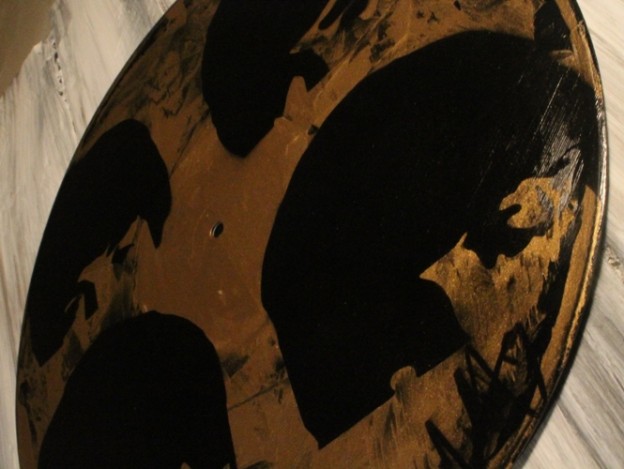By Marion Boddy-Evans
Not all shadows are equal. There are in fact two very different kinds that occur in any subject — cast and form shadows. Identifying these and approaching them differently, rather than just painting a generic ‘shadow’, will enhance any painting. So what is the difference?
What is a Cast Shadow?
This is what we generally think of as a shadow. It is created by something blocking the light source. For example, the shadow of a tree, created by the sunlight, that falls on the ground. Or the shadow on a tabletop from an apple sitting on it. Or the shadow of a nose falling on a cheek.
It’s the darker type of shadow, because it’s created by the light source being blocked. It has quite a sharp or more definite edge to it. But it’s important to remember that a cast shadow isn’t a solid thing that’s the same throughout: the further it is from the object that’s creating it, the lighter it gets and the softer or less defined its edge becomes.
What is a Form Shadow?
This is the shadow on a subject on the side that is not directly facing the light source. Or what you might think of as the parts of the subject ‘in the shadow’ because they don’t have direct light on them but also don’t have a cast shadow falling on them. I’ve sometimes heard it referred to as an area with a “lack of light”, which I think makes a nice distinction from what we generally visualize as “shadow”.
A form shadow has a softer or less defined edge to it than a cast shadow. It is lighter than a cast shadow because it’s created by light not reaching around the object rather than a shadow being thrown by the object where it directly blocks the light source. Form shadows are subtle, essential for making a subject appear three dimensional rather than flat. The changes in forms shadows requires very careful observation — squinting at the subject often help you see them more clearly. If most of the subject is in direct light, there will be very little form shadow in it.
Think, for example, of a vase on a table, where the light source is at about two o’clock. The top edge of the vase is in the direct light and there will be a cast shadow made by the vase on the table. The parts of the vase not in direct light are in form shadow.
Shadow Painting Tips:
- Squinting at a subject helps make the areas of light and dark clearer.
- Remember, shadows are not simply ‘black’. Use darker tones of the colors in the objects, or dark complementary colours.

Leave a Reply
You must be logged in to post a comment.